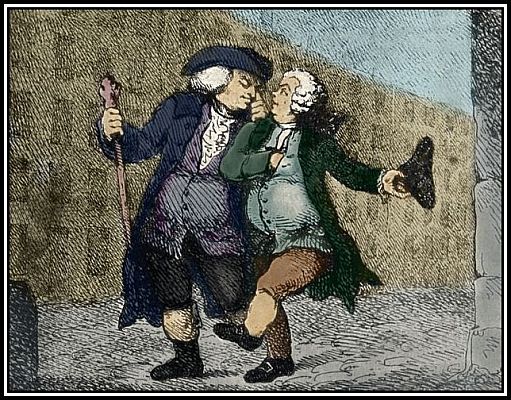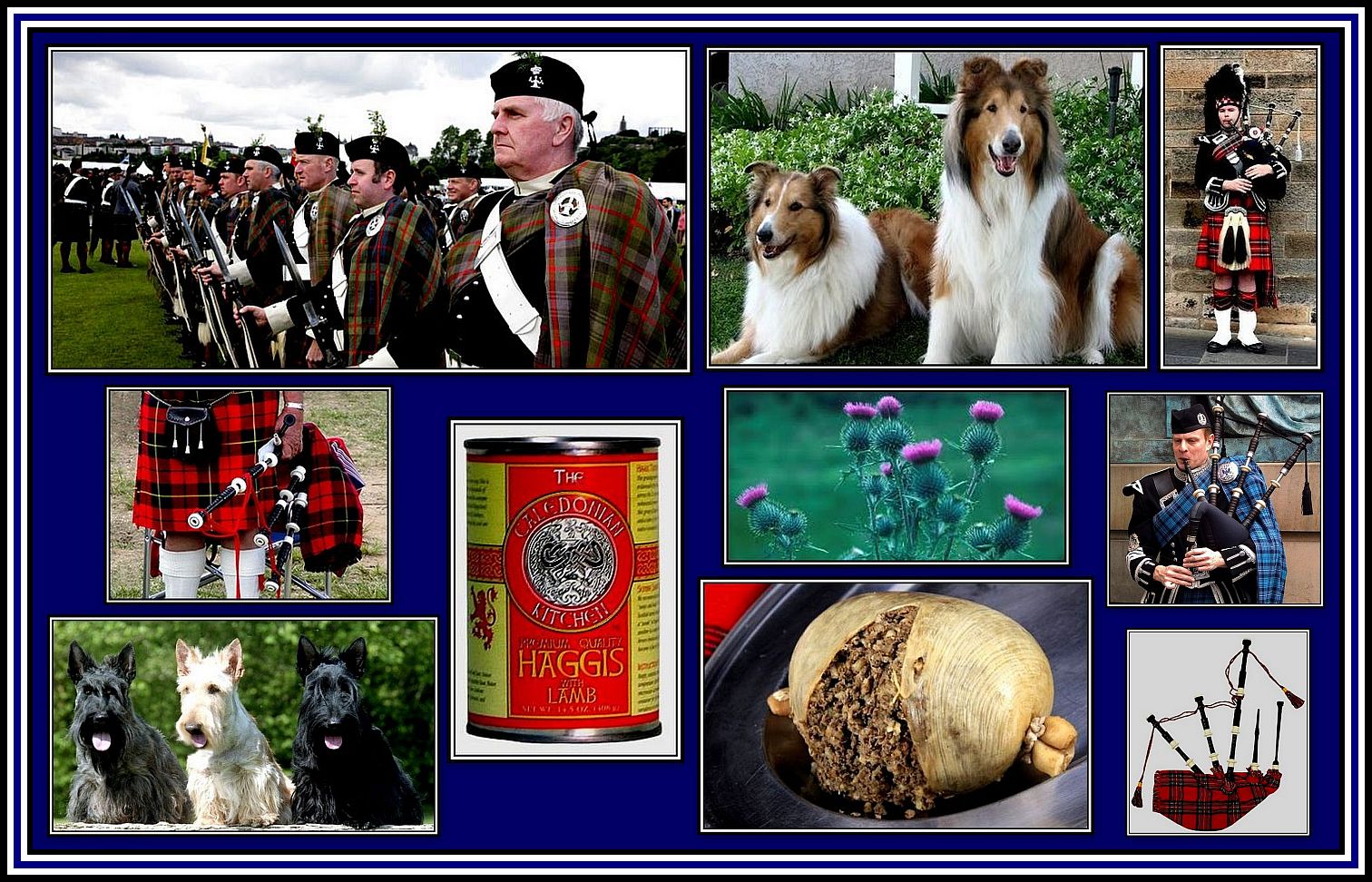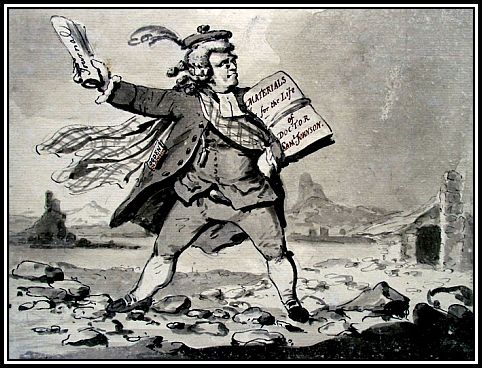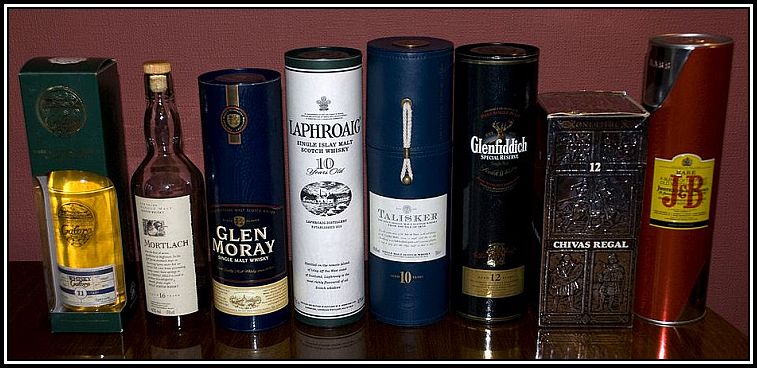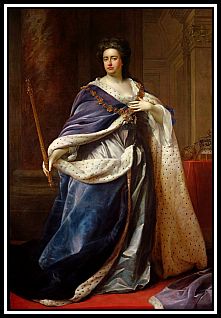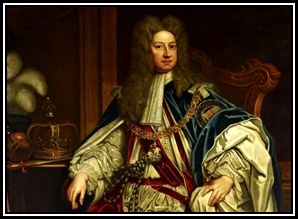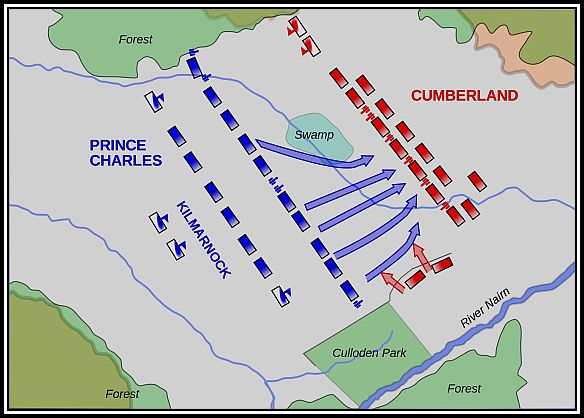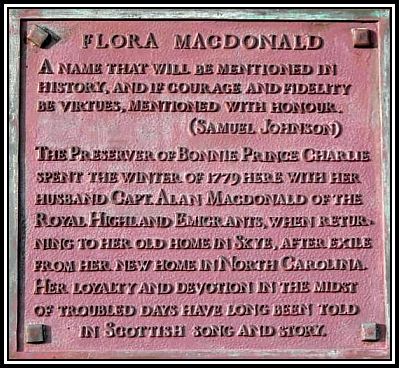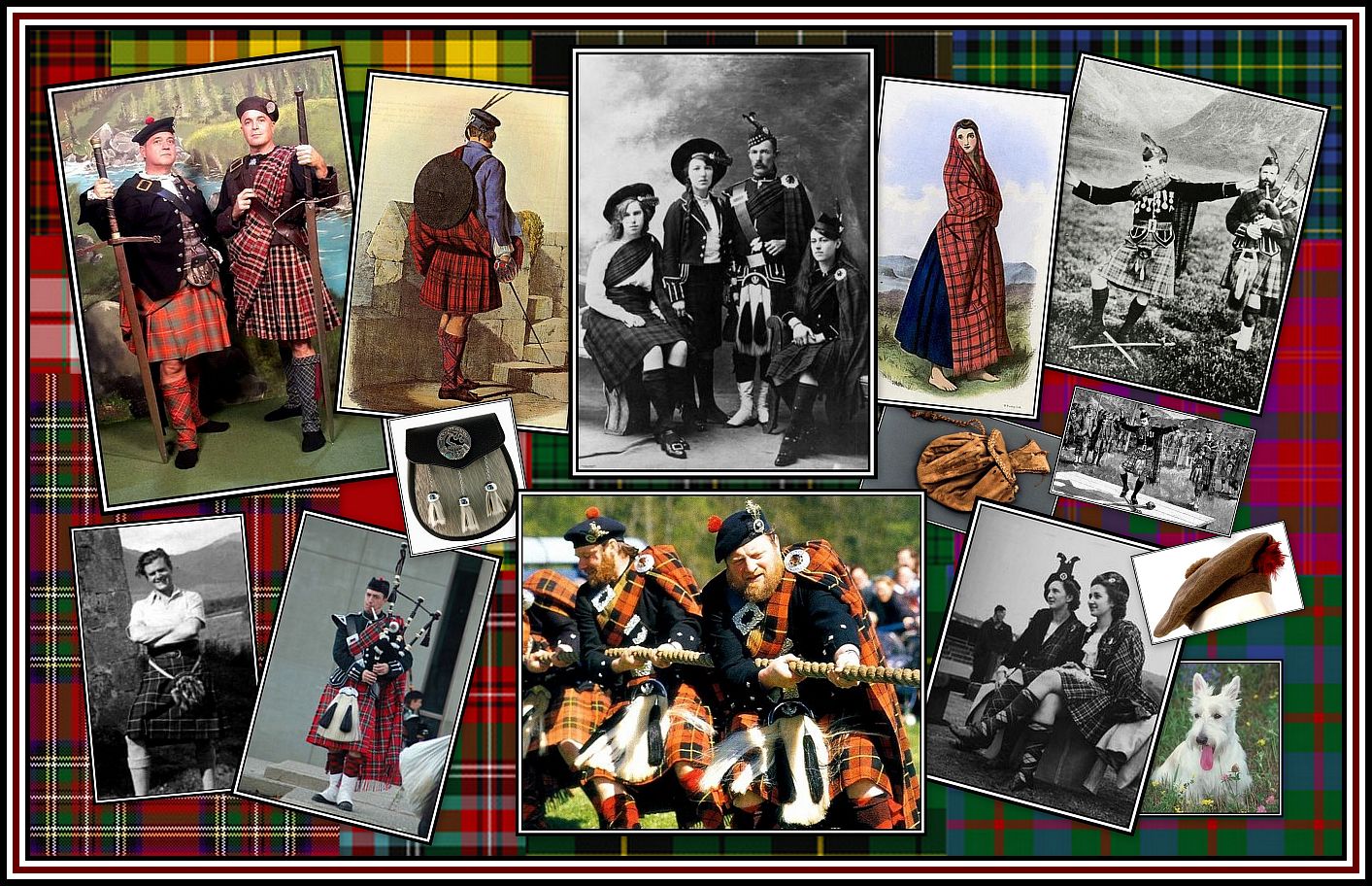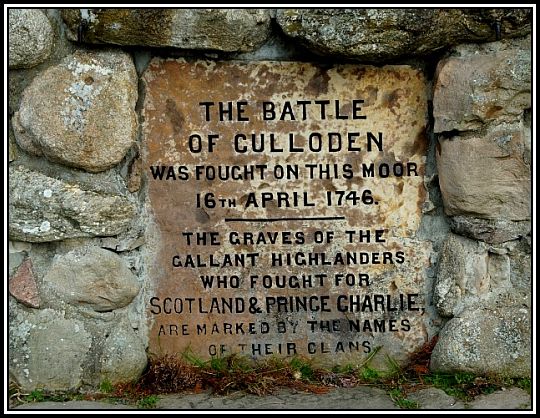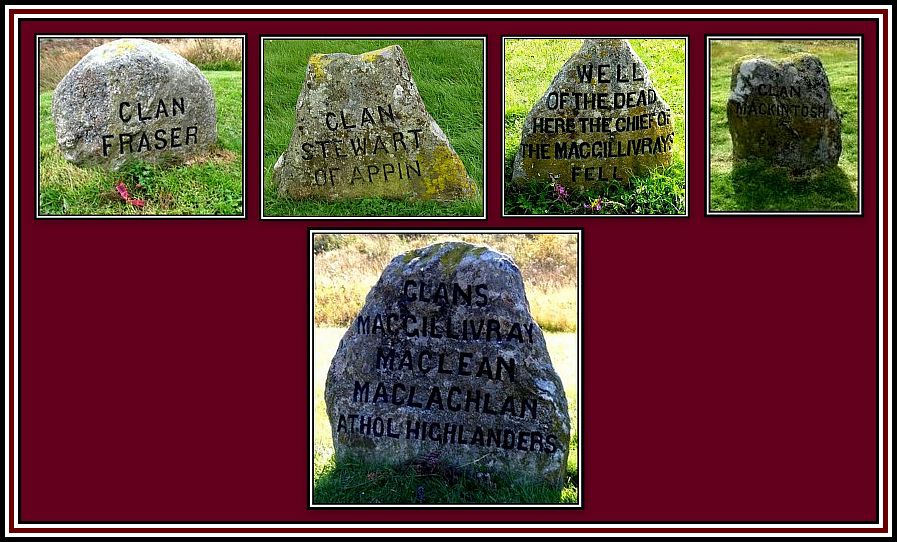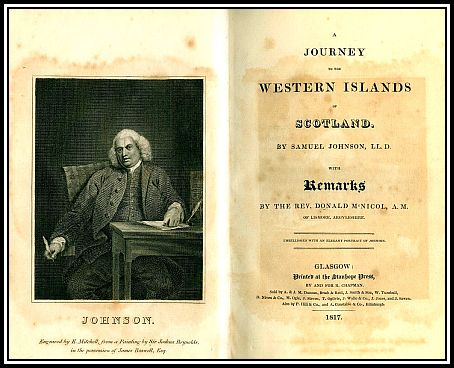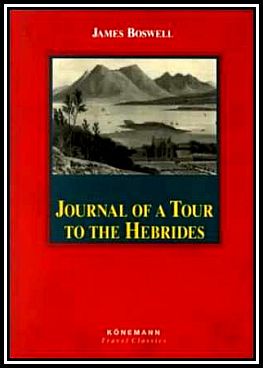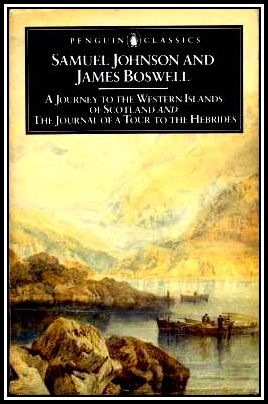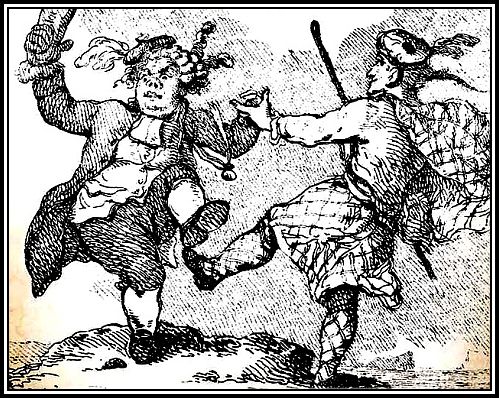THE LIFE & TIMES
OF
DOCTOR SAMUEL JOHNSON
 Dr. Samuel Johnson (1709-1784)
Dr. Samuel Johnson (1709-1784)
-oOo-
Once again, may I recommend that the reader listen to the following piece of music while reading about Doctor Johnson & James Boswell: The Trip to Scotland.
The music is The Scotland Suite, which is played and written by Harvey Reid.
-oOo-
DOCTOR JOHNSON & JAMES BOSWELL
THE TRIP TO SCOTLAND
On Saturday the 14th of August 1773 late in the Evening I received a Note from him that he was arrived at Boyd’s Inn at the head of the Cannon-gate, I went to him directly. He embraced me cordially, and I exulted in the thought that I now had him actually in Caledonia.
Written by James Boswell on learning of the arrival of Doctor Johnson in Scotland
-oOo-
In 1771, Thomas Pennant (1726-1798) published his detailed and lengthy book, A Tour in Scotland in 1769. Doctor Johnson was impressed by it and said of the author that he was the best traveler I ever read and noted that he observes more things than anyone else does.
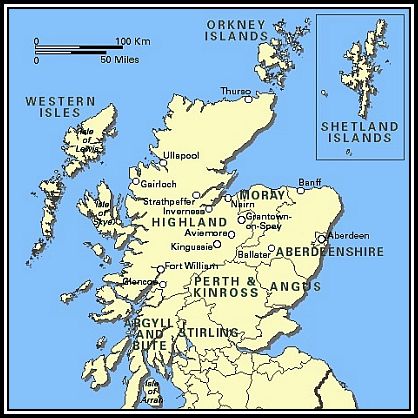 Map of The Highlands & Central Lowlands of Scotland
Map of The Highlands & Central Lowlands of Scotland
The English had become fascinated with Scotland and things Scottish and Doctor Johnson wanted to visit the Country in order to write his own Travel Narrative.
-oOo-
A Haggis is a savoury pudding containing sheep’s Pluck (also known as Offal, which consists of a mixture of heart, liver and lungs). The meat is minced with onion, oatmeal, suet, spices, and salt, and mixed with stock. Traditionally the mixture is encased in the animal’s stomach, however, today, it is more often cooked in an artificial casing.
Although many readers will be revolted by the Haggis, may I say it is a tasty dish and needs to be tasted before dismissing.
-oOo-
Scotland was still viewed as a somewhat wild place at the time of Doctor Johnson’s visit where Pirates and Slave Ships could be found visiting its coast. The Western Islands were sparsely populated and had already gained the reputation of being a romantic place.
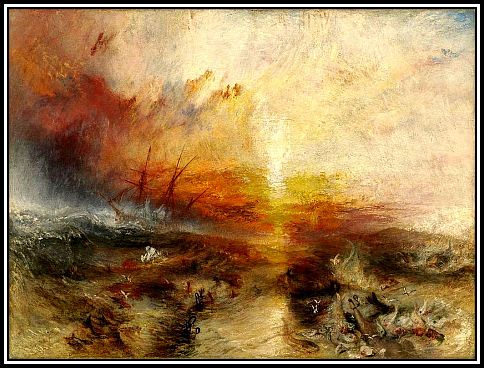 The Slave Ship, originally titled Slavers Throwing overboard the Dead and Dying—Typhon coming on and painted in 1840 by J.M.W. Turner (1775-1851)
The Slave Ship, originally titled Slavers Throwing overboard the Dead and Dying—Typhon coming on and painted in 1840 by J.M.W. Turner (1775-1851)
-oOo-
Doctor Johnson was no traveler and spent most of his adult life in London. It was not until 1771 that he traveled for the first time. Therefore it may seem odd to the reader that he chose, during the late summer and autumn of 1773, to go to Scotland and travel by carriage where possible, and by horseback and boat when it was not, in order to journey through the Western Islands (The Hebrides) to fulfill his aim in writing a Travel Narrative.
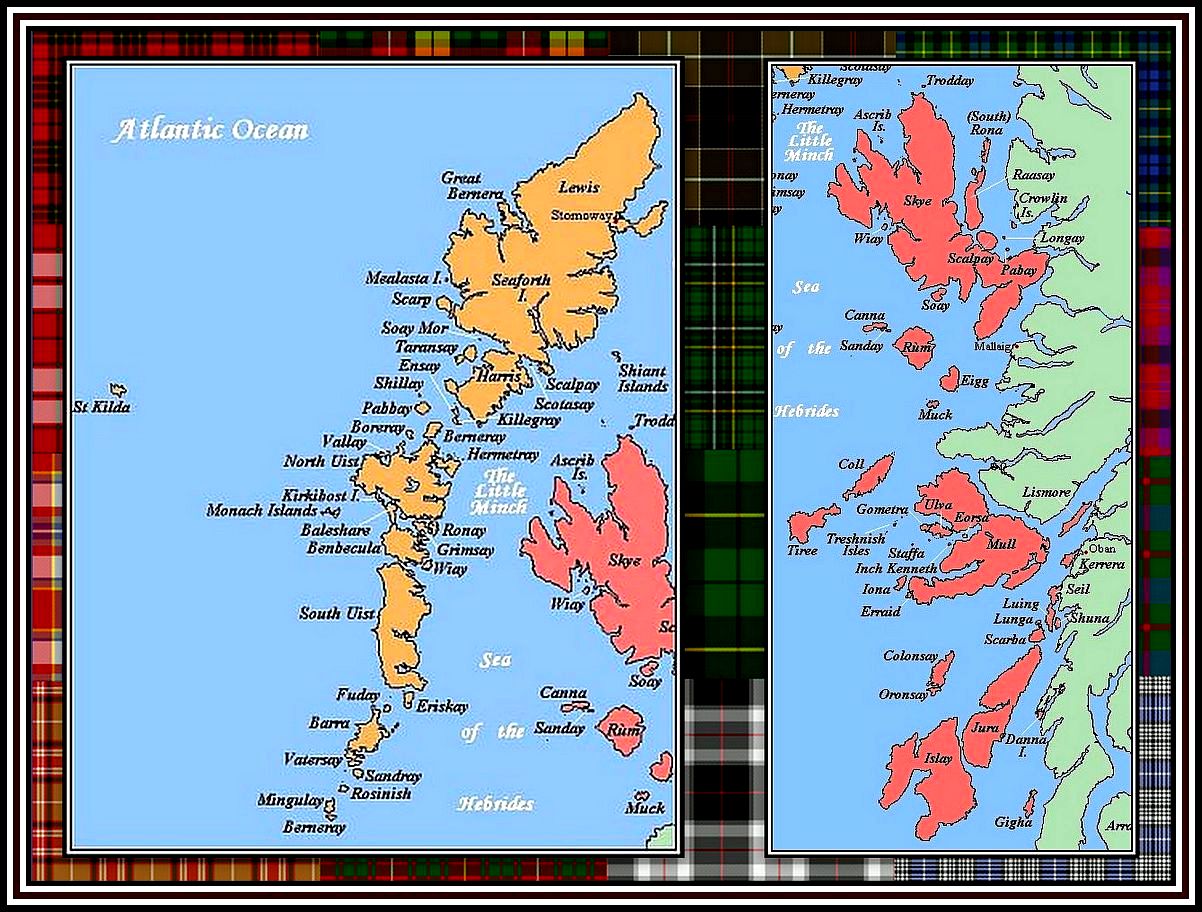 Map of The Western Islands (The Hebrides) of Scotland: Left, Outer Hebrides; Right, Inner Hebrides
Map of The Western Islands (The Hebrides) of Scotland: Left, Outer Hebrides; Right, Inner Hebrides
Samuel Johnson wrote:
On the eighteenth of August we left Edinburgh, a city too well known to admit description, and directed our course northward, along the eastern coast of Scotland, accompanied the first day by another gentleman, who could stay with us only long enough to shew us how much we lost at separation.
-oOo-
Doctor Johnson set off on a tour of the Western Islands in the company of James Boswell on the 18th August, 1773 and was to last eighty-three-days.
-oOo-
It is of interest to note that the Genre Painter and Caricaturist, Samuel Collings (died 1795) received a commission from the publisher, E. Jackson, to imagine scenes of the journey made by Doctor Johnson and James Boswell through The Western Islands of Scotland.
The result of the commission was that a number of humorous illustrations were produced, which were then etched by Thomas Rowlandson (1756-1827).
Over twenty of these illustrations were given to Princeton University as a gift by Dickson Q. Brown, a member of The Class of 1895, and some appear on the Null-Entropy website.
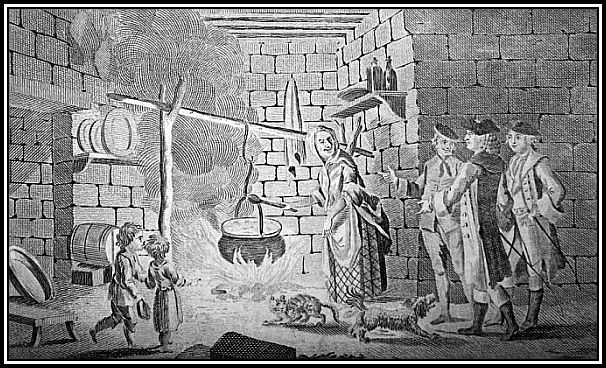 This illustration appeared in the Gentleman’s Magazine: and Historical Chronicle, Vol XLV, London: Printed at St. John’s Gate, for D. Henry, and sold by F. Newbery, 1775. de Beer Eb 1731 G; reproduced here from Null Entropy: The Journey of Doctor Johnson and James Boswell (January 2012)
This illustration appeared in the Gentleman’s Magazine: and Historical Chronicle, Vol XLV, London: Printed at St. John’s Gate, for D. Henry, and sold by F. Newbery, 1775. de Beer Eb 1731 G; reproduced here from Null Entropy: The Journey of Doctor Johnson and James Boswell (January 2012)
-oOo-
Doctor Johnson’s aim in visiting this part of the British Isles was to identify, study and discuss the social problems and struggles of the people. It was his hope to find examples of the primitive and the wild and comment.
Although most of the accoutrements of modern life had not, as of yet, encroached on its society, he observed that the Country was in the midst of change and felt that perhaps his visit had come too late to observe fully the land, its people and their culture in their purest form.
Doctor Johnson found that bartering was still part of daily life in some of the Islands, as money had not yet replaced the traditional in personal trading. Roads were few or none at all, as was the case on the Isle of Skye. This resulted in his having to continue part of his journey on horseback, which caused the traveling of short distances to take several hours.
He also found that the Wearing of Tartan and speaking the Gaelic Language to be currently outlawed. Despite the prohibitions, he did see some dressed in Tartan and playing the Bagpipes, as well as being able to sample a variety of Whiskys.
-oOo-
SCOTLAND IN 1773
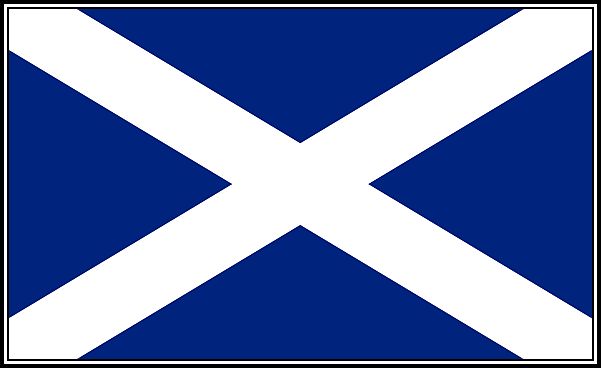 The Flag of Scotland; The Cross of Saint Andrew
The Flag of Scotland; The Cross of Saint Andrew
Saint Andrew, also known as Andrew the Apostle, is the Patron Saint of Scotland; he was the brother of Simon Peter (Saint Peter) and a fisherman before becoming a Disciple and one of the Twelve Apostles chosen by Jesus Christ. Saint Andrew was martyred by Crucifixion on a Cross of the form called Crux decussata, which is an X-shaped Cross (known now as Saint Andrew’s Cross; also known as the Saltire). Crucifixion in such a manner was apparently at his own request, since he felt that he was unworthy to be crucified in the same manner as Jesus Christ.
-oOo-
When Queen Anne (1665-1714) died, she had no surviving children, which signaled the end of the Reign of the House of Stuart. As a result of the Act of Settlement, 1701, the Crown passed to her second cousin, George I of the House of Hanover. This situation did not sit well with the remaining members of the House of Stuart.
-oOo-
Charles Edward Louis John Casimir Sylvester Severino Maria Stuart (1720–1788) was the eldest son of James Francis Edward Stuart and grandson of James VII of Scotland and James II of England and who was Catholic. He was also well known by a variety of names including The Young Pretender, The Young Chevalier and Bonnie Prince Charlie.
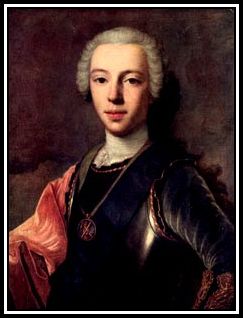 Charles Edward Stuart, The Young Chevalier
Charles Edward Stuart, The Young Chevalier
In view of his parentage, Charles Edward Stuart lay claim to the thrones of Scotland and England and led the unsuccessful Jacobite Uprising of 1745, which he had hoped would restore the thrones to his family.
-oOo-
The Battle of Culloden took place on 16th April, 1746 near Inverness in the Scottish Highlands and was the final confrontation of the Jacobite Uprising, which formed part of the religious Civil War taking place in Britain. The Jacobites, led by Charles Edward Stuart, supported the hope for religious toleration of Catholics and believed in the Divine Right of Kings. The Loyalists troops were mostly Protestant and were commanded by William Augustus, Duke of Cumberland (1721-1765).
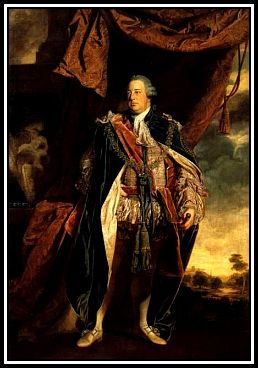 Prince William, Duke of Cumberland, also known as Sweet William by The Whigs (supporters) and The Butcher by The Tories (opponents); the painting is by Sir Joshua Reynolds
Prince William, Duke of Cumberland, also known as Sweet William by The Whigs (supporters) and The Butcher by The Tories (opponents); the painting is by Sir Joshua Reynolds
Although the Jacobites were defeated in battle, Charles Edward Stuart managed to escape from Uist to the Isle of Skye and then out of the country and avoid capture. He was able to get to the Isle of Skye by donning the disguise of a serving maid and with the help of Fiona MacDonald (1722-1790).
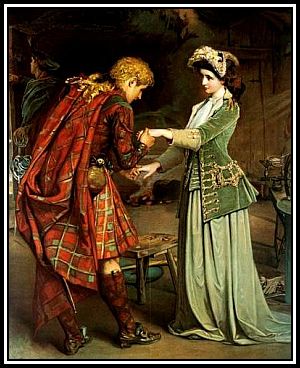 A Depiction of Bonnie Prince Charlie & Fiona MacDonald
A Depiction of Bonnie Prince Charlie & Fiona MacDonald
Once Charles Edward Stuart left Scotland, he lived in exile for the remainder of his life. His defeat and flight have made him a romantic figure and one of legend with many stories and songs being written about him and his escape with much emphasis on the role of Fiona MacDonald.
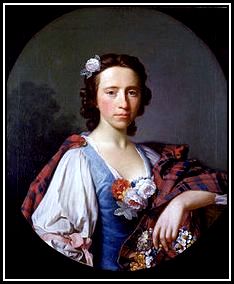 Flora MacDonald painted by Allan Ramsey (1713-1784)
Flora MacDonald painted by Allan Ramsey (1713-1784)
-oOo-
It is of interest to note that Doctor Johnson met Mistress Flora MacDonald in 1773 during his visit to The Western Islands. He described her as:
a woman of soft features, gentle manners, kind soul and elegant presence. A name that will be mentioned in history, and if courage and fidelity be virtues, mentioned with honour
and part of his words are inscribed on a memorial to her at Kilmur, on The Isle of Skye where she is buried.
-oOo-
Following the defeat of the Jacobite Cause, a number of Laws were enforced on the populace of Scotland. These remained in place for a generation and were then repelled on 1st July, 1782:
- The Act of Proscription was an Act, which came into effect in Scotland on the 1st August, 1746. It was an effort to assimilate the Scottish Highlands and ending the ability to revolt and the first of the Laws, which sought to crush the Clan system following the Jacobite Rising of 1745.
- After the Jacobite Rising of 1715, it was evident that the most effective supporters of the Jacobites were the Clans and the Disarming Act. which was passed on 1st November, 1716, attempted to remove this threat. The Act of 1716 did not achieve the Government’s aim, and in 1725, an act for the more effectual disarming of the highlands was passed and more effectively enforced.
- The Dress Act 1746 was part of The Act of Proscription, which came into force on 1st August, 1746 and made the wearing of Highland Dress, including Tartan or a Kilt, illegal in Scotland.
-oOo-
The victors of The Battle of Culloden indulged in mass murder of those considered to be Traitors or else were deported. The wearing of Highland Dress and Tartan were banned, as was the speaking of Gaelic. In this way, the Government hoped to smash any further threat of insurrection.
Click here to hear spoken Scottish Gaelic
Despite the Clan System having been outlawed, the Clan Chieftains were often the only authority visible in many areas of The Highlands.
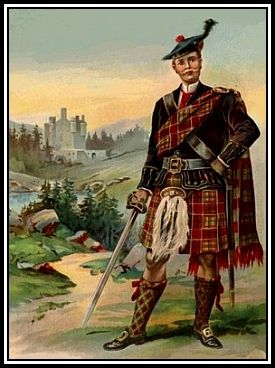 A Clan Chieftain in the 19th Century
A Clan Chieftain in the 19th Century
Click here to read some little known facts about Scottish Clans
Prior to the defeat of The Rebellion, a number of Scots from The Highlands had left the Country to start new lives in America while others had moved to the cities. This resulted in a marked reduction in the population of The Highlands. The movement of people who once made their living by small-scale agriculture formed part of what was known as Highland Clearance.
Highland Clearance was essentially an enforced and simultaneous eviction of all families living in a given area, such as an entire Glen. This policy was in effect during the 18th and 19th Centuries and resulted from enclosures of common lands and a change from farming to sheep raising and was championed largely by hereditary aristocratic landowners. In addition, people living in The Hebrides in the Western Islands were also at the mercy of Slave Traders who raided the coastal area and captured people who were then taken to America where they were used as cheap labour in the plantations.
-oOo-
-oOo-
The Battle of Culloden is also of significance in that it marks the last conflict to be fought on British soil.
-oOo-
FOLKS SONGS INSPIRED BY BONNIE PRINCE CHARLIE
Charlie He’s My Darling sung by Ewan MacColl (born James Henry Miller;1915-1989) & Peggy Seeger (born 1935)
-oOo-
A version of the song was presented in the episode, Charlie X (Season One, Episode 8), in the original series of Star Trek.
CLICK HERE to see and hear it sung by Lieutenant Uhura, played by Nichelle Nichols (born 1932, as Grace Dell Nichols)
-oOo-
The Skye Boat Song sung by The Corries, which consisted of Roy Williamson (1936-1990) and Ronnie Browne (born 1937)
-oOo-
Will Ye No Come Back Again (Bonnie Charlie) sung by The Corries
-oOo-
THE BOOKS WRITTEN AFTER THE JOURNEY
Doctor Johnson published, A Journey to the Western Islands of Scotland in 1775 where he included his observations of his journey undertaken with Boswell in the late summer and early autumn of 1773.
In 1785, Boswell published his interpretation of the journey, A Journal of a Tour to the Hebrides, which was much less of a Travel Narrative than his observations of Doctor Johnson.
It has become the practice of publishers of these two accounts to produce a tome containing them both since they represent two different viewpoints of the same journey.
Boswell’s account has been seen as a foretaste of his biography, The Life of Samuel Johnson, LL.D., which was published in 1791. His account included some amusing antidotes of Doctor Johnson including his brandishing a Broad Sword, Wearing a Tartan and dancing a Highland Jig, for which I would have paid money gladly to witness!
A Jig played on The Bagpipes
-oOo-
Jimmy Shand & His Band playing The Bluebell Polka
-oOo-
Click here to watch Scottish Country Dancing
and click here to see how to dance the Eightsome Reel – note the stamina of the dancers and also note that very, very few are overweight.
-oOo-
During Doctor Johnson’s travels in Scotland, he visited The Boswells at their home in Ayrshire where he met James’ wife and father, The 8th Laird of Auchinleck. Neither Mrs. Boswell nor Lord Auchinleck seemed very impressed with Doctor Johnson. The Laird concluded that his son had lost his mind and had pinned himself to the tail of an old Dominie (i.e. schoolmaster) ! Mrs. Boswell was not flattering either to Doctor Johnson and called him a bear! However, she did seem to tolerate some of his idiosyncrasies without complaint.
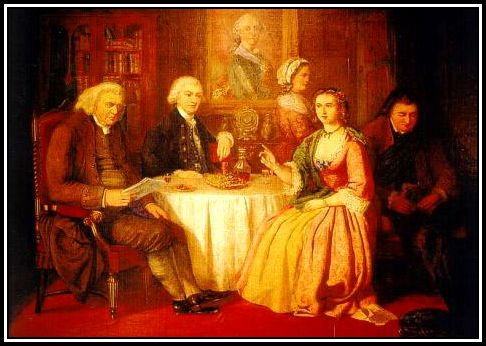 Doctor Johnson visits The Boswell Family at home
Doctor Johnson visits The Boswell Family at home
——oooOOOooo——
CLICK HERE
To Read About
JAMES BOSWELL: LIFE APART FROM DOCTOR JOHNSON
OR
CLICK HERE
to RETURN to the series HOME PAGE
——oooOOOooo——
ACKNOWLEDGEMENTS
I would like to thank Mr. Paul Bland for his help.
——oooOOOooo——
Click here to GO to the JAMES BOSWELL: LIFE APART FROM DOCTOR JOHNSON
——oooOOOooo——
Click here to GO to the JAMES BOSWELL: LIFE WITH DOCTOR JOHNSON
——oooOOOooo——
Click here to RETURN to the JAMES BOSWELL: LIFE BEFORE DOCTOR JOHNSON
——oooOOOooo——
Click here to RETURN to the LIFE AFTER THE DICTIONARY
——oooOOOooo——
Click here to RETURN to the DOCTOR JOHNSON IN LONDON
——oooOOOooo——
Click here to RETURN to the DOCTOR JOHNSON’S SORTIE INTO LOVE AND MARRIAGE
——oooOOOooo——
Click here to RETURN to the THE EARLY LIFE & OF DR. SAMUEL JOHNSON
——oooOOOooo——
Click here to RETURN to the DR. SAMUEL JOHNSON – CONFESSION
——oooOOOooo——
Click here to GO to the TABLE OF CONTENTS
——oooOOOooo——

